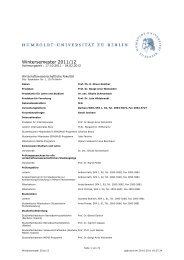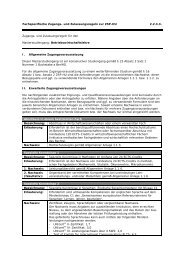Measuring the Effects of a Shock to Monetary Policy - Humboldt ...
Measuring the Effects of a Shock to Monetary Policy - Humboldt ...
Measuring the Effects of a Shock to Monetary Policy - Humboldt ...
You also want an ePaper? Increase the reach of your titles
YUMPU automatically turns print PDFs into web optimized ePapers that Google loves.
Bayesian FAVARs with Agnostic Identification 29<br />
Xt = ¯ Λ ¯ Ft + et<br />
According <strong>to</strong> <strong>the</strong> Bayesian approach <strong>the</strong> parameter space with <strong>the</strong> respective hyper-<br />
parameters 29 and <strong>the</strong> fac<strong>to</strong>rs {Ft} T<br />
t=1<br />
his<strong>to</strong>ries <strong>of</strong> X and F from period 1 through T are defined by<br />
5.3 Inference<br />
(16)<br />
are treated as random variables. The respective<br />
˜XT = (X1, X2, . . . , XT )<br />
˜FT = (F1, F2, . . . , FT )<br />
This part is very close <strong>to</strong> BBE [2005] and Eliasz [2005]. For completenes <strong>the</strong> single steps<br />
are presented at this stage. The task as it was described in <strong>the</strong> section about Gibbs<br />
sampling, is <strong>to</strong> derive <strong>the</strong> posterior densities. The aim is <strong>to</strong> empirically approximate <strong>the</strong><br />
marginal posterior densities <strong>of</strong><br />
p( ˜ FT ) = p( ˜ FT , θ)dθ and p(θ) = p( ˜ FT , θ)d ˜ FT where p( ˜ FT , θ)<br />
is <strong>the</strong> joint posterior density and <strong>the</strong> integrals are taken with respect <strong>to</strong> <strong>the</strong> supports <strong>of</strong><br />
θ and ˜ FT respectively. The procedure applied <strong>to</strong> obtain <strong>the</strong> empirical approximation<br />
<strong>of</strong> <strong>the</strong> posterior distribution is <strong>the</strong> previously explained multi move version <strong>of</strong> <strong>the</strong> Gibbs<br />
sampling technique by Carter and Kohn [1994]. BBE also apply this estimation procedure<br />
that is surveyed by Kim and Nelson [1999].<br />
Choosing <strong>the</strong> Starting Values θ 0<br />
In general one can start <strong>the</strong> iteration cycle with any arbitrary randomly drawn set <strong>of</strong><br />
parameters, as <strong>the</strong> joint and marginal empirical distributions <strong>of</strong> <strong>the</strong> generated parame-<br />
ters will converge at an exponential rate <strong>to</strong> its joint and marginal target distributions as<br />
S → ∞. This has been shown by Geman and Geman [1984]. Following <strong>the</strong> advice <strong>of</strong><br />
Eliasz [2005] one should judiciously select <strong>the</strong> starting values in <strong>the</strong> framework <strong>of</strong> large<br />
29 The hyperparameters refer <strong>to</strong> <strong>the</strong> elements <strong>of</strong> <strong>the</strong> parameter space


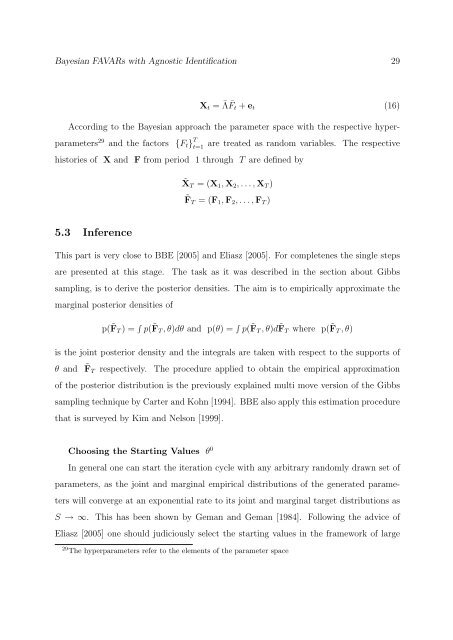

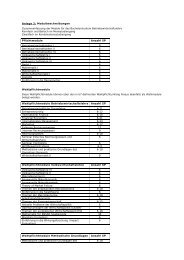

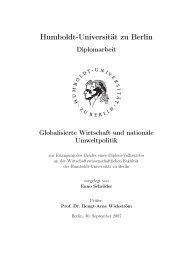
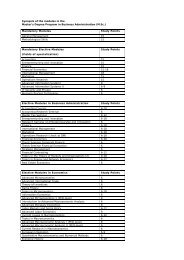
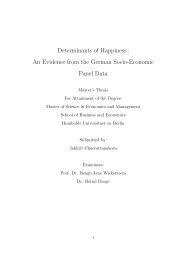
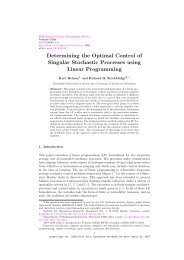
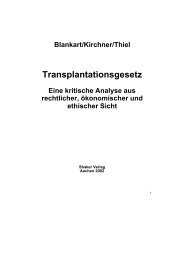
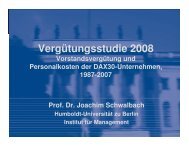

![[Text eingeben] [Text eingeben] Lebenslauf Anna-Maria Schneider](https://img.yumpu.com/16300391/1/184x260/text-eingeben-text-eingeben-lebenslauf-anna-maria-schneider.jpg?quality=85)

